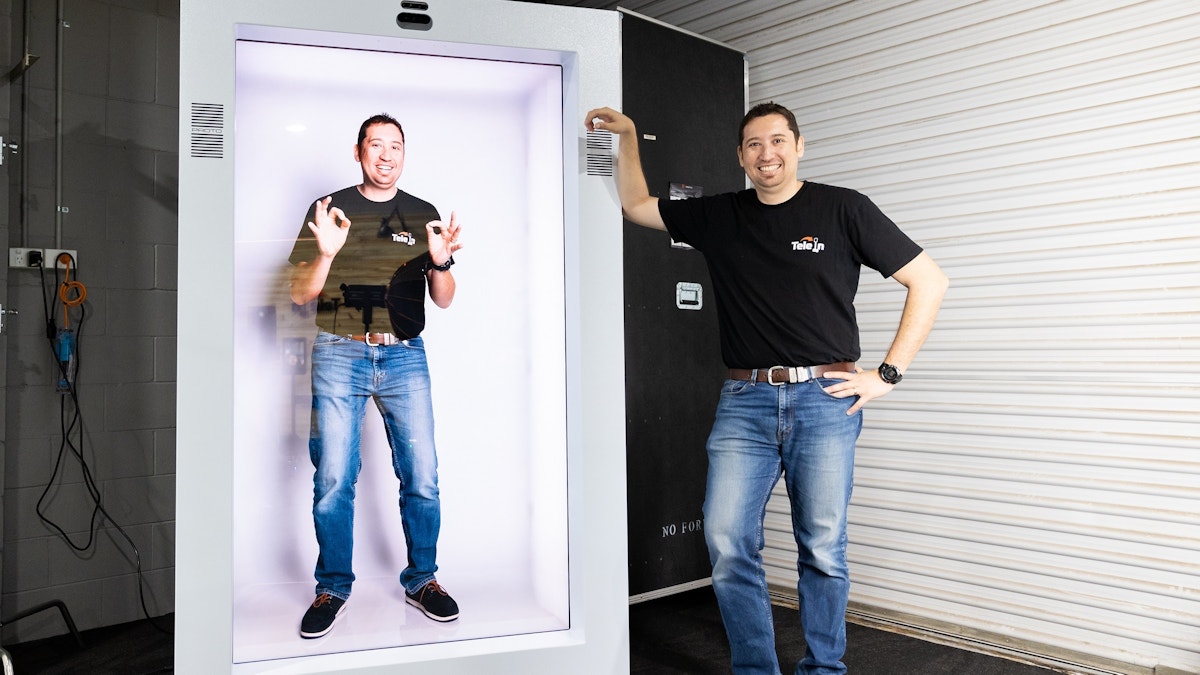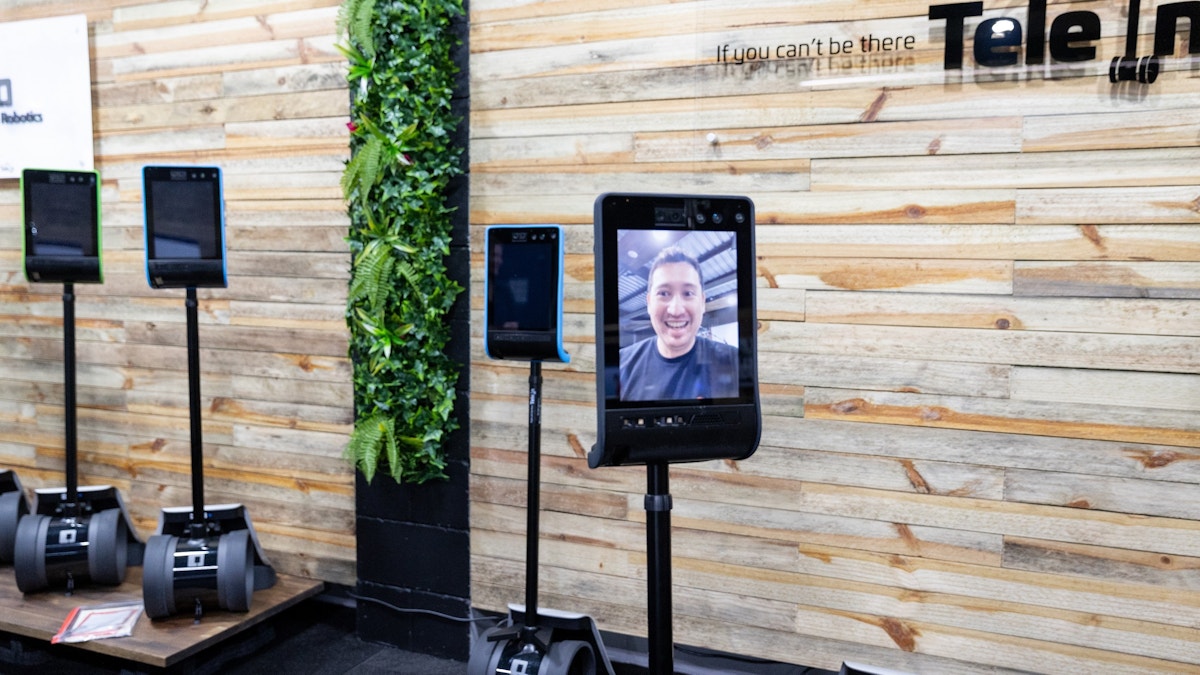
Beam me up to work, Scotty
Published 12:00pm 14 October 2022

 Words by Kylie Knight
Words by Kylie Knight
Working remotely or from home has become commonplace during COVID-19 but imagine ‘being at work’ without actually being there.
Robot and hologram technology is making it possible now and Clontarf-based business TeleIn is driving the change.
The business, owned and founded by Benjamin Farkas, is a supplier of next-generation video conferencing telepresence robotics and holographic teleportation technology.
It all started in late 2018 when he was unable to attend his sister’s wedding in Greece and investigated alternatives to Zoom and livestreaming.
“I came across a second-hand telepresence robot. It needed a little bit of work and jimmied it up so it just worked, sent it over there with my sister. It was a terrible experience but the idea was that if this was a problem for me, other people are going to have this challenge as well,” he explains.
He then invested in some newer models and started a rental business.
“To my surprise, people were searching for that kind of thing on Google. We were really busy, sending robots all over the countryside for people who couldn’t physically attend,” Benjamin says.
When COVID-19 arrived in 2020, demand for tele-robotics ramped up as people tried to work out how they could still ‘attend’ family events.
|“People were warming up to streaming, but that’s a one-way street. You’re not really interacting,” he says.|
“It became more prominent, when all the states had different rules. All of a sudden, we had a lot of enquiries especially around funerals. At that time, I was basically giving them away … if someone identified they were using it for a funeral, I said ‘just have it’.”
It turned out to be a good way of marketing the technology, with demand increasing as more people saw it in use.

Vital tool
As the pandemic rolled on and lockdowns and mandatory isolation periods kicked in, businesses increasingly sought better ways to allow their staff to work from home but remain connected.
By dialling in via a robot, which can move around the room, equipped with a screen, camera, microphone and speaker, the staff member can be an active member of the onsite team.
“That person is positioned at the end of the desk with the rest of the team as if they were there. It allows them to have that small chat and be able to communicate as if they were there,” Benjamin says.
“You can start to feel the vibe of the project, the vibe of the organisation … pipe in with those ad hoc conversations and you can follow them to the break room and have that virtual coffee with them and talk about whatever they’re talking about.”

Endless opportunities
Benjamin says the technology has a range of applications including office workplaces, warehouses, health care, education, aged care and more.
“The opportunities here are far-reaching. I would disagree with anyone who would suggest that this type of technology would remove jobs. I would absolutely say that this is an empowering technology,” he says.
It can also open doors for those in regional and remote areas to work for a metropolitan-based company or vice-versa.
“We’ve got a staffing crisis, we’ve got a cost-of-living crisis, so how could you expect someone who could otherwise potentially do the majority of their role remotely, to live in a mainstream area where rents are through the roof, petrol is out of control, it takes you two hours to commute to get to work … this might be a suitable option,” he says.
“Where I’m actually more excited about is the opportunity to give people who have got disabilities to work in mainstream workforces, particularly those with mobilities issues.”
The technology removes barriers of transport and unsuitable physical work environments.
Benjamin says it is also a useful tool for businesses that have high travel budgets and are looking for smarter, more productive and cost-effective ways to connect their teams with each other and clients.
Holograms break down barriers
TeleIn also provides Proto hologram technology which allows users to interact with clients, colleagues, students and bystanders in real time.
The hologram can be livestreamed or deliver pre-recorded content but has to be seen to be fully appreciated.
|“It’s much more engaging. You feel like that person is actually there in that box,” Benjamin says.|
He would love to use it in a pilot project to deliver expert education in regional areas, where it can be difficult to attract and retain specialist teachers.
So, what does the future hold?
“I think the future is extremely bright, especially when we look at this technology as an enabling technology,” Benjamin says.
“I see an opportunity to give a job to anyone who wants a job and could do it quasi-remotely.”
For more information, visit the website or phone 1300 342 546.
Related Stories
Top Stories

Info sessions for North Pine dam
Drop-in community sessions are being held over the next nine days for those wanting more information about Seqwater’s dam improvement program.


Popular Stories

Moreton Bay artists shine in 2024 Brisbane Portrait Prize
Four Moreton Bay artists are among the 64 finalists chosen from almost 600 entries in this year’s Brisbane Portrait Prize. See their works...

'Priority' given for Waraba plans
Waraba, formerly known as Caboolture West, will be the 36th Priority Development Area in Queensland, unlocking land for 30,000 new homes and an estimated 70,000 new residents.

Trai Fuller: ‘It’s always felt like home’
Praised by Wayne Bennett for his courageous style of play and loved by long-time Dolphins fans, Trai Fuller has locked in a two-year deal with the club he calls home. He tells us why it means so much to him












